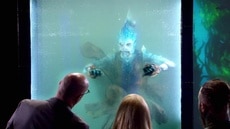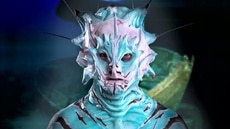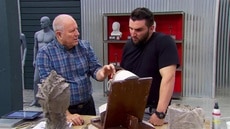Create a free profile to get unlimited access to exclusive videos, sweepstakes, and more!
As NASA says goodbye, what will Opportunity’s afterlife on Mars look like?

After a battery fail it could not be resuscitated from, NASA’s Opportunity Rover gasped its last breath on the Red Planet (thanks in large part to an epic dust storm). But what will happen to its metal corpse?
Will it end up shredded beyond recognition like Elon Musk’s Tesla Roadster is destined to be? Sorry to disappoint anyone who thought a luxury car taking off on a rocket while playing David Bowie’s Space Oddity was the coolest thing ever, but most things made by humans just don’t last after they leave Earth’s biosphere. The Tesla is going to end up blasted by cosmic rays and other forces. Opportunity, not so much.
The rover isn’t made of nearly as many organics that Musk’s Tesla is, including plastics and those luxe leather seats. Opportunity’s insulation is one of its few plastic innards that solar radiation will eventually kill. Other than that, it will probably look pretty much the same for a while, give or take a couple centuries. Curious astronauts won’t notice much of a difference — except an overabundance of reddish dust — if we manage to put humans on Mars. That might take a while.
Now imagine what would become of the rover’s bones over thousands and even millions of years. Martian dust that settles on it will probably end up windblown, but over an extended period of time, whether that dust will continue to be blown away or if it will finally pile up. That still is unlikely to bury the inert robot.
Now let’s fast-forward millions of years. You know what happens to anything lying around that long on Earth, unless you’ve never seen a fossil. Things end up buried on our planet because of water and plate tectonics, forces that don’t apply on Mars. Not that there isn’t water on the Red Planet. The types of oceans and rivers and lakes that Earth is overflowing with have long since dried up on Mars, if they even existed at all.
There is still a way Opportunity’s final resting place could also end up being its burial ground if it doesn’t get smashed by an incoming asteroid first.
"Over the very long-term, you're going to get impacts that knock up ejecta [airborne Mars dirt] from where they hit, and that ejecta will very gradually resurface [on] the planet and bury things that were on the surface," Jeff Moersch, a member of the Opportunity team and professor of planetary science at the University of Tennessee, told LiveScience.
NASA has no plans to bring this corpse back to Earth, but if we really do get a human colony going and actually surviving on Mars, it could end up in a potential museum a few decades or more down the line.
(via LiveScience)



























